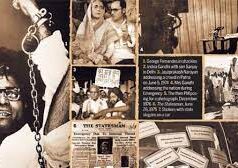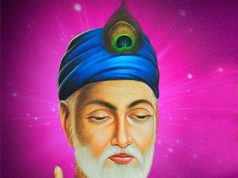
When I think of what it means to be a Hindu, I think of a ways of life based on Dharma. It is what supports and upholds the universal laws. It is what keeps us in harmony with the universe, and in harmony with ourselves
By Denna Marriam
I was born into a secular Jewish family in New York City, but for my family, being Jewish was an ethnic identity rather than a religious one. I had a strong religious bent from childhood but was left on my own to discover and explore the spiritual world, free of any doctrinal impositions. From an early age, this took the form of relating to the Divine as a Mother, and so my search for the Devi began. In my childhood I experienced fleeting memories of past births, and I naturally accepted reincarnation and karma as reality, not mere beliefs.
It wasn’t until I entered college and a friend handed me ‘The Autobiography of a Yogi’ by Paramahansa Yogananda that it all came together for me. I recognised him immediately as my Guru, and although he had already left his body, a strong internal connection with him was established. He led me onto the path of meditation and study of the Vedic texts, and confirmed so much of what I had felt intuitively. Most importantly, he introduced me to the various forms of the Divine Mother. It was then that I began to identify myself as a Hindu. As I entered into a worshipful relationship with the Devi, I sadly recognised how she has been suppressed in other religious traditions, including in the one into which I was born.
After college I went to graduate school at Columbia University, specialising in sacred literature. There was one course on the Vedas, which I eagerly took, only to be disappointed to see how it was taught. The professor, who was a westerner and not a Hindu, spoke about the deities as if they were part of an out-dated mythology, not living beings. I was deeply offended, and abandoning my thought to pursue an academic career, I realised how much I had come to identify myself as a Hindu. I began my own study of the ancient texts, the Upanishads, the Yoga Sutras and most importantly to me the Bhagavad Gita, which I read and re-read and re-read until I had memorised numerous portions. I wrote my graduate thesis on a comparison between the Bhagavad Gita and the Book of Job from the Old Testament. Both are dialogues between man and the divine, and both end with surrender to the will of the divine, a surrender born of love and union. My professor thought otherwise and wrote all over my thesis that the relationship with God in the Old Testament is one of fear, not love. There was no concept of love, she said, in the Old Testament. I remember being shocked and thinking, “that is why I am a Hindu!” How can one not have a relationship of love with the Ultimate Reality. The universe was born out of and is sustained by love. And so my identity as a Hindu deepened.
Many years later I became involved with organising interfaith gatherings. This was not anything I sought but it was an opportunity that came to me quite unexpectedly. The first big gathering I helped to organise was at the United Nations (UN) in New York in the year 2000. The Millennium World Peace Summit of Religious and Spiritual Leaders was the first gathering of religious leaders at the UN, and it was an effort to enable religious leaders to work with the UN on peace building. My co-organiser was a Jain man from India, and we made a point of including a large delegation of Hindus, Jains and Buddhists, something that had never been done before at an interfaith meeting. We brought 108 swamis to the UN, and, unknown to them, they created quite a stir. Some of the Abrahamic leaders were greatly unsettled, because previously interfaith dialogue had really been Abrahamic dialogue, with only the most modest representation from the East, if at all. When I realised how unbalanced interfaith dialogue had been, I saw my work cut out for me—the inclusion of the Dharma traditions in an equal manner to help balance interreligious exchange. This became the focus of my work. Just as the Abrahamic traditions are viewed as one family, I began to speak of the Dharma traditions as one family and to proclaim that interfaith organising must now balance the Abrahamic and Dharma traditions to represent truly the world’s wisdom.
With my interfaith work now well underway I began to be invited to many global gatherings. In 2001, I was invited to a conference on Religion and the Environment in Tehran, Iran. After I arrived one of the officials there asked me my religion. When I replied “Hindu,” he looked at me with disbelief and asked again. When I insisted that I was Hindu, he answered, “That is a strange religion. You worship monkeys and elephants.” Those words struck pain in my heart. How could I explain to him about my beloved Hanuman and Ganesh. I walked away at that moment thinking he did not deserve an explanation. Fortunately, in the 17 years since that time, much has changed, and yoga and the Hindu worldview are better understood by many in that part of the world. I had a similar experience when I was invited to Saudi Arabia later in 2001. On the visa application, I entered “Hindu” when asked for my religion. But when I arrived in the country, the immigration officer took one look at me and asked me again for my religion. I responded, “Hindu.” He kept pressing me and I kept insisting that I was indeed Hindu. I didn’t think he would not let me into the country, although I had an official invitation, but my Jain colleague with whom I was traveling, came to my rescue and confirmed that I was indeed Hindu, and I was then allowed to enter the country. I wondered then if he would have responded the same way if I had said I was Buddhist. It is widely recognised that Buddhism has become a global religion and has many western followers. The same is true of Hinduism. I am always reminding people not to forget the “white Hindus.” These experiences paved the way for me to step out and speak more openly about the beauty and richness of the Hinduism and the gratitude I feel for being part of this ancient tradition.
When asked what it means to be a Hindu, I think of my very real and intimate relationship with Lord Shiva, with Narayan, Maha Lakshmi, Mata Parvati, Sri Ram, Lord Krishna, and my own Gurudev. They are the beings dearest to me and are more real than anything else. How many times I have heard their response, seen impossible things happen after a prayer to one of them. They are not concepts or symbols but living beings who display a quality of love beyond human comprehension, and who respond very concretely to our love for them.
When I think of what it means to be Hindu, I think of the many practices and technologies developed by our Rishis to help us awaken to the reality of our oneness with the Divine; to know that everything is a manifestation of that One. Hinduism is not a belief system, a set of doctrines as so many religions are. It is experience based. Each individual is given the tools to uncover the Ultimate Reality, to realise one’s own Self, to enter into one’s own relationship with the deities who are there to guide and uplift us, and to lead us home.
When I think of what it means to be a Hindu, I think of a way of life based on Dharma, which has no adequate English translation. One knows what it is but it is hard to capture that understanding in words. Dharma is our guide in all things. It is what supports and upholds the universal laws. It is what keeps us in harmony with the universe, and in harmony with ourselves.
As I have grown older, I have learned that our deepest spiritual insights are meant to help advance society, to address the conditions that prevent people from reaching their potential. As we witness the failures of our modern consumer society, with its near destruction of the natural world, many of us in the west eagerly hope to see a new development paradigm, a new path carved by India. I watch from a distance with sadness as some in India debate the role of India’s ancient Dharma civilisation in the India of today. Our survival as a global community may depend on a shift away from the western bred development, to a civilisation based on the values and realisations of ancient India, adapted to the modern context. The branding of “Hindutva” as extremist, based on the misunderstanding of a few fringe elements, hurts us all, Indians and non-Indians alike. We all need to envision and work toward a Dharma based civilisation. We cannot isolate Dharma to our personal lives: it applies to every aspect of our collective life—to education, the economy, our social and political life. To me, Hindutva means bringing the understanding of Dharma, the essence of Hinduism, into everyday life so that we can shape a new more sustainable and peaceful culture, based on the wisdom of the past but using the tools and advances that are carrying us into the future.
It is time that we who are deeply imbued with Hindu ideals re-frame the conversation. Hindu values do not belong to the fringes. They belong to the centre of life. It is those very values that will lead us into a more sacred relationship with the natural world, with each other, and with the One who is the foundation of all life.
(The writer is an organiser of inter-religious dialogues. She is the founder of the Global Peace Initiative of Women and the Contemplative Alliance and is a long time student of Paramahansa Yogananda)
Courtesy: Organiser














